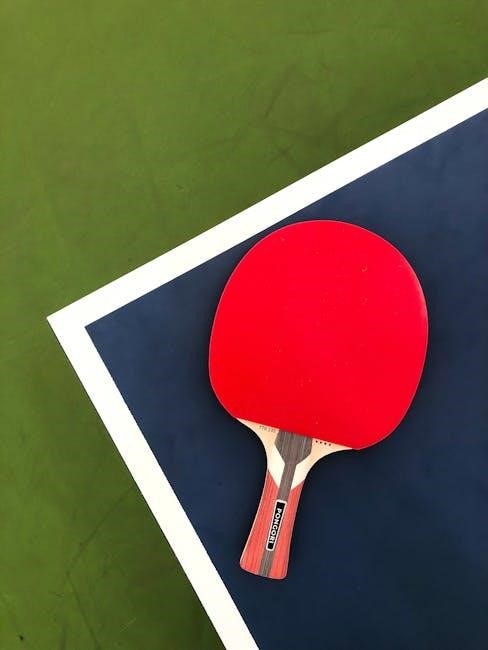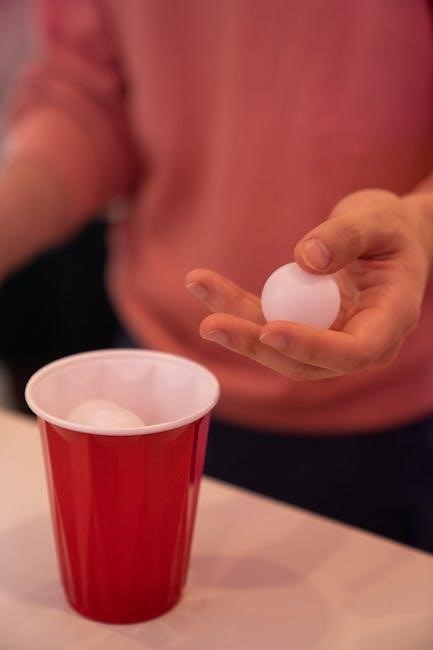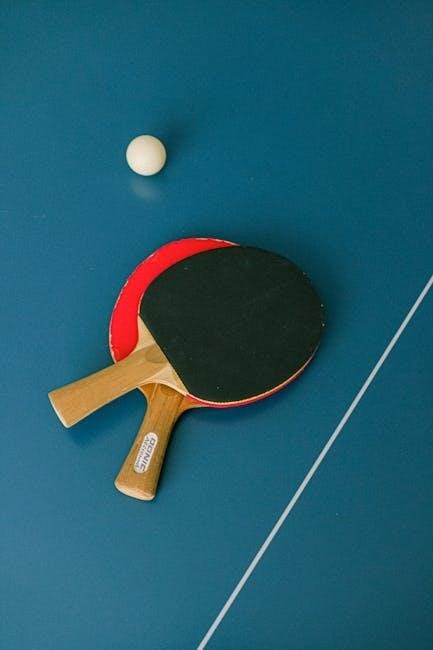
Scratch Pong Game PDF Article Plan
This comprehensive guide will walk you through creating your own Pong game using Scratch, a visual programming language. We will cover everything from setting up the environment to implementing scoring and game over conditions. Follow along to create your own functional game!
Embark on a journey into the world of game development with Scratch and Pong! This article serves as your guide to creating a digital rendition of the classic arcade game. We will explore the basics of Scratch, a visual programming environment perfect for beginners, and understand the core concepts behind the timeless game of Pong;
Prepare to learn how these two elements combine to offer a fun and engaging learning experience. By understanding both Scratch and Pong, you’ll gain a foundation for creating interactive projects. Let’s dive into the exciting intersection of coding and gaming!
What is Scratch?
Scratch is a visual programming language and online community developed by the MIT Media Lab. It’s designed to be user-friendly, especially for beginners, allowing users to create interactive stories, games, and animations without complex coding syntax. Scratch utilizes a block-based interface, where code is represented by colorful blocks that can be dragged and dropped to create scripts.
This approach makes programming accessible and engaging, fostering creativity and problem-solving skills. Scratch promotes collaboration and sharing, where users can share their creations and learn from others. It’s a fantastic tool for learning the fundamentals of programming in a fun and intuitive way.
What is Pong?
Pong is a classic arcade game that simulates table tennis. The game typically involves two players, each controlling a paddle on opposite sides of the screen. A ball moves back and forth, and players must use their paddles to hit the ball and prevent it from passing their side.
The objective is to score points by making the ball go past the opponent’s paddle. Pong is known for its simple yet addictive gameplay, making it a popular choice for early video game enthusiasts. The game is usually on a single axis of movement and it is parallel to the wall.
Setting Up the Scratch Environment
Before diving into creating Pong, you’ll need to set up your Scratch environment. This involves creating a new project and familiarizing yourself with the Scratch interface for smooth development.
Creating a New Project
To begin your Pong game, you’ll first need to create a new project within the Scratch environment. This is a straightforward process that involves opening the Scratch website or application and selecting the option to start a new project. This action will provide you with a clean slate where you can begin adding sprites, writing code, and designing the various elements of your Pong game. Think of it as setting up your digital canvas, ready for you to bring your game idea to life. Ensure that you save your project regularly to avoid losing any progress as you build your game. A new project provides the foundation for the entire game.
Understanding the Scratch Interface
Familiarizing yourself with the Scratch interface is crucial before diving into game development. The interface is divided into key sections: the stage, where your game is visually displayed; the sprite pane, housing all the game’s characters and objects; the blocks palette, containing code snippets categorized by function (motion, looks, control, etc.); and the scripting area, where you drag and arrange blocks to create code. Understanding how these components interact is fundamental to building your Pong game. Experiment with different blocks and observe their effects on the stage. This exploration will empower you to effectively program the ball, paddle, and other game elements, paving the way for a successful project.

Creating the Ball Sprite
The ball sprite is central to Pong. You’ll either import a ball image or draw one. Then, you’ll code its movement, making it bounce around the screen. This is where the game comes to life.
Importing or Drawing the Ball
First, decide whether you want to import an existing ball sprite or create your own. Scratch offers both options. To import, click the “Choose a Sprite from Library” button and search for a suitable ball image. Alternatively, unleash your creativity by drawing your own unique ball sprite.
Click the “Paint new sprite” button to open the Scratch editor. Use the circle tool to draw a ball of your desired color and size. Ensure the ball is centered within the sprite’s costume for accurate collision detection later. You can also add details like shading or patterns to personalize your ball.
Consider the ball’s color and how it contrasts with the background for visibility. Experiment with different designs until you have a ball sprite that you are happy with.
Coding the Ball’s Movement
Now, let’s program the ball to move across the screen. Start by using the “when green flag clicked” block to initiate the game. Then, use the “forever” block to create a continuous loop for the ball’s movement.
Inside the loop, use the “move ( ) steps” block to make the ball move forward. Adjust the number of steps to control the ball’s speed. To give the ball a direction, use the “point in direction ( )” block and set an initial angle, such as 45 degrees.
To make the ball bounce off the edges of the screen, use an “if on edge, bounce” block. This will reverse the ball’s direction when it hits the edge, creating a realistic bouncing effect. Finally, test your code and adjust the speed and direction as needed to achieve the desired gameplay.

Creating the Paddle Sprite
Next, we’ll design the paddle that the player will use to interact with the ball. This involves creating a new sprite, customizing its appearance, and positioning it correctly on the stage.
Designing the Paddle
First, we need to create the paddle sprite within the Scratch environment. You can either choose to draw a new sprite using the built-in drawing tools or import an image from your computer. A simple rectangle shape is ideal for a paddle. Consider the color and size; a bright color can enhance visibility.
Adjust the dimensions to ensure it’s easily controllable but still large enough to effectively hit the ball. Position the paddle near the bottom edge of the stage. Remember, the paddle’s design influences gameplay, so optimize for both aesthetics and functionality. Test different designs to find what you prefer!
Controlling the Paddle with Keyboard Input
To control the paddle, we’ll use keyboard input. Within the paddle sprite’s code, use the “when key pressed” blocks to detect when the left or right arrow keys are pressed. When the right arrow key is pressed, change the paddle’s x-position by a positive value (e.g., 10) to move it right.
Similarly, when the left arrow key is pressed, change the x-position by a negative value (e.g., -10) to move it left. This allows smooth, responsive control. Ensure the paddle stays within the screen boundaries by adding conditional statements to prevent it from moving off-screen. Test and adjust the speed for optimal gameplay.

Implementing Ball-Paddle Collision
This section focuses on making the ball interact with the paddle. We will use collision detection to trigger a response when the ball hits the paddle, causing the ball to bounce.
Detecting Collisions
To ensure that the ball interacts realistically with the paddle, it’s crucial to accurately detect when a collision occurs. In Scratch, we can achieve this using the “touching” block. This block allows us to check if one sprite, in this case the ball, is touching another sprite, which would be the paddle.
We will implement this check within the ball’s forever loop, constantly monitoring its position relative to the paddle. When the “touching” block returns true, indicating a collision, we can then trigger the appropriate response, which we will define in the next step.
This method provides a simple and effective way to detect collisions in our Pong game, allowing us to create a responsive and engaging gameplay experience. This part is pivotal to simulating physical interactions within the game.
Making the Ball Bounce
Once we’ve detected a collision between the ball and the paddle, the next step is to make the ball bounce realistically. This involves changing the ball’s direction of movement. A simple way to achieve this in Scratch is to invert the ball’s horizontal velocity upon collision.
We can accomplish this by multiplying the ball’s x-velocity by -1. This effectively reverses the ball’s horizontal direction, causing it to bounce away from the paddle. To add a bit of randomness and prevent the game from becoming too predictable, we can also introduce a slight variation to the ball’s vertical velocity after each bounce.
This can be done by adding a small random number to the ball’s y-velocity. By combining the velocity inversion with a touch of randomness, we create a bouncing effect that feels both natural and engaging to the player. The realistic bouncing action is crucial for a fun experience.

Adding Scoring and Game Over
To complete our Pong game, we’ll implement scoring and game over conditions. This involves creating score variables and defining what happens when the ball passes the paddle, ending the game.
Creating Score Variables
To track the players’ progress, we need to create score variables. In Scratch, variables act as containers to store information that can change during the game. We will create a variable named “PlayerScore.” This variable will store the score.
Next, initialize the “PlayerScore” variable at the start of the game to zero. This ensures that each new game begins with a clean slate. Whenever the ball passes the paddle, signifying a point for the opponent, we will increment the “PlayerScore” variable by one.
By displaying the “PlayerScore” variable on the screen, players can easily see their current score. This adds a competitive element to the game, encouraging players to improve their performance.
Implementing Game Over Condition
To make the game challenging, we need to implement a “Game Over” condition. This determines when the game ends. We can set a condition where the game ends when the “PlayerScore” reaches a predetermined limit. For example, the game could end when the “PlayerScore” reaches 10;
To implement this, we use an “if” statement in Scratch. The “if” statement checks if the “PlayerScore” is greater than or equal to our set limit. If the condition is met, the game will trigger a “Game Over” event;
This event can halt the ball’s movement and display a “Game Over” message on the screen. In addition, you can add sound effects to signal the end of the game. Finally, you can provide an option to restart the game.